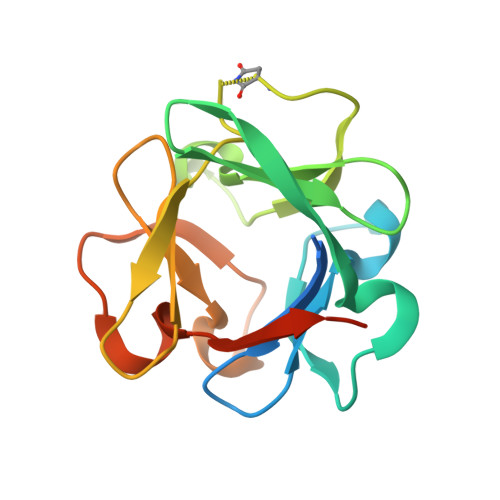Structural and biochemical analysis of family 92 carbohydrate-binding modules uncovers multivalent binding to beta-glucans.
Hao, M.S., Mazurkewich, S., Li, H., Kvammen, A., Saha, S., Koskela, S., Inman, A.R., Nakajima, M., Tanaka, N., Nakai, H., Branden, G., Bulone, V., Larsbrink, J., McKee, L.S.(2024) Nat Commun 15: 3429-3429
- PubMed: 38653764
- DOI: https://doi.org/10.1038/s41467-024-47584-y
- Primary Citation of Related Structures:
7ZOH, 7ZOI, 7ZON, 7ZOO, 7ZOP - PubMed Abstract:
Carbohydrate-binding modules (CBMs) are non-catalytic proteins found appended to carbohydrate-active enzymes. Soil and marine bacteria secrete such enzymes to scavenge nutrition, and they often use CBMs to improve reaction rates and retention of released sugars. Here we present a structural and functional analysis of the recently established CBM family 92. All proteins analysed bind preferentially to β-1,6-glucans. This contrasts with the diversity of predicted substrates among the enzymes attached to CBM92 domains. We present crystal structures for two proteins, and confirm by mutagenesis that tryptophan residues permit ligand binding at three distinct functional binding sites on each protein. Multivalent CBM families are uncommon, so the establishment and structural characterisation of CBM92 enriches the classification database and will facilitate functional prediction in future projects. We propose that CBM92 proteins may cross-link polysaccharides in nature, and might have use in novel strategies for enzyme immobilisation.
Organizational Affiliation:
Division of Glycoscience, Department of Chemistry, KTH Royal Institute of Technology, AlbaNova University Centre, 106 91, Stockholm, Sweden.















